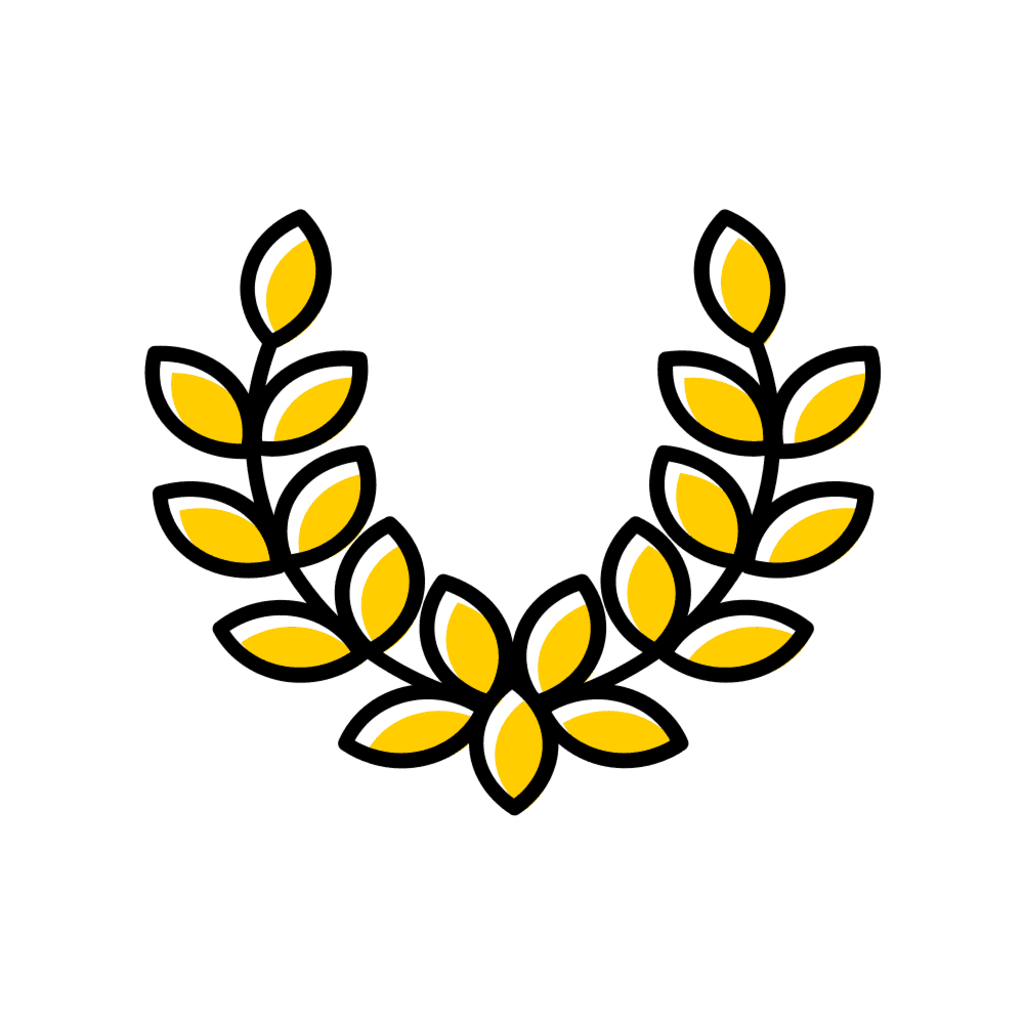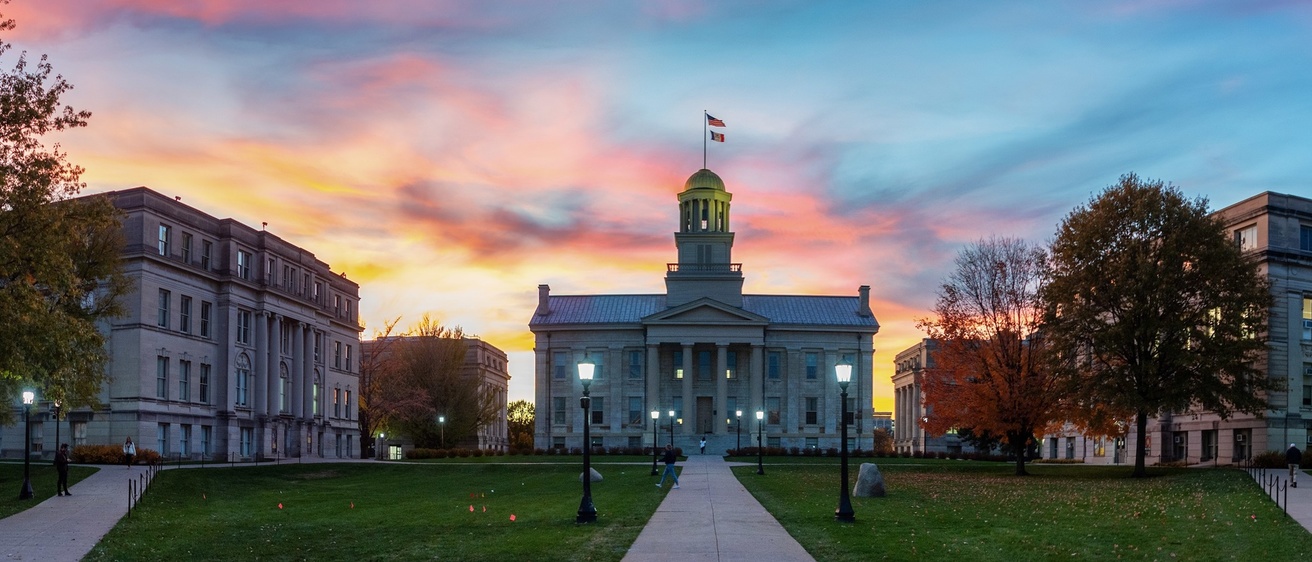The university is committed to ongoing, focused measurement and assessment of activities in support of the plan.
Each tactic implemented as part of the strategic plan includes metrics and indicators for assessing its effectiveness, guiding its ongoing implementation, and recognizing its success. These indicators will be monitored, updated, supplemented, and reported on throughout the life of the plan. Since the five priorities of the strategic plan are interconnected, all our metrics and indicators are tied to multiple areas and reflect work taking place across the university.
In alignment with the strategic plan of the Board of Regents, the university has set specific five-year targets for several high-level indicators, and will report on progress toward meeting these targets annually.
Year 3 Update
After three years of implementing our 2022-2027 Strategic Plan, the University of Iowa has delivered impressive results across multiple institutional priorities. A mid-cycle update, completed in February 2025, provided an opportunity to establish updated 2027 targets for first-year retention rate, four-year graduation rate, and increase in patient capacity. Just months later, the university set new records for student retention and graduation rates, philanthropic support, and patient visits to UI Health Care facilities.
Our execution of the strategic plan continues to drive improvements in the targeted progress indicators below and across other key measures of institutional progress, such as AAU membership indicators, faculty and staff retention rates, demographic data, and more.
All baseline numbers below are three-year averages unless otherwise noted.
Targeted Progress Indicators
| Metric | Baseline1 | 2023 | 2024 | 2025 | 2027 Target |
|---|---|---|---|---|---|
| Fall-to-fall retention for first-year undergraduate students | 87% | 89% | 90% | 91% | Increase to 91% |
| Four-year undergraduate completion rates | 56% | 61% | 64% | 66% | Increase to 65% |
| Six-year undergraduate completion rates | 73% | 73% | 75% | 76% | Increase to 75% |
| Attainment gap2 in fall-to-fall retention of Pell Grant recipient3 undergraduate students | 7% | 6% | 5% | 5% | Decrease to 4% |
| Attainment gap2 in fall-to-fall retention of first-generation4 students | 10% | 9% | 6% | 8% | Decrease to 6-8% |
| Attainment gap2 in four-year graduation rate of Pell Grant recipient3 undergraduate students | 13% | 15% | 12% | 16% | Decrease to 11% |
| Attainment gap2 in four-year graduation rate of first-generation4 undergraduate students | 13% | 17% | 16% | 17% | Decrease to 9-11% |
| Attainment gap2 in six-year graduation rate of Pell Grant recipient3 undergraduate students | 14% | 15% | 11% | 14% | Decrease to 10% |
| Attainment gap2 in six-year graduation rate of first-generation4 undergraduate students | 13% | 16% | 15% | 16% | Decrease to 7-9% |
| Need- and merit-based philanthropic scholarship support for undergraduate, graduate, and professional students | $27.4M | $27.6M | $34.2M | $35.4M | Increase to $32.4M |
| UI Health Care ranking in Vizient Quality and Accountability Study of comprehensive academic medical centers | Ranked 71 of 1015 | Ranked 80 of 116 | Ranked 90 of 115 | Ranked 70 of 118 | Rank in top 50 |
| Annual increase in research expenditures6 | 3% | 7% | 11% | 6.2% | 5% |
| Philanthropic support for faculty prizes/awards, fellowships, professorships, chairs, and deanships | $18.3M | $26.7M | $33.1M | $34.9M | Increase to $21.6M |
| Percentage of students reporting participation in a high-impact, experiential learning opportunity in responses to the Senior Exit Survey | 87% | 85% | 84% | 92% | Increase to 90% |
Additional Targets for 2027
Maintain 95% or greater success rate for online courses
The success rate for online courses from academic year 2024-25 is 96%.
Increase UI Health Care patient capacity by 30%7
UI Health Care measured an average of 3.21 million annual patient encounters in FY25, a 47% increase over the baseline measurement.
75% of undergraduate students completing a sustainability-focused course by graduation
32% of undergraduate students who graduated in the 2024-25 academic year had completed a sustainability-focused course.
Achieve a 47% campuswide reduction in greenhouse gas emissions
UI staff are collaborating with the Iowa DNR to update two university air regulatory permits in 2025-26,
providing the operational flexibility required to make continued progress toward campus greenhouse gas
emissions goals.
Maintain 79% or greater of a Net Asset Value8 index score of GEF facilities
The UI has contracted with a vendor to evaluate its Net Asset Value index score, with reports to be delivered
in early 2026.
100% of new buildings and renovations meet or exceed LEED design certification thresholds
UI Design Standards and Procedures ensure all new building and renovation projects are designed to meet or exceed LEED thresholds.
Include employment outcomes of graduates in academic program reviews
The university updated its Policy Manual in October 2023 to require employment outcomes as part of departmental and academic program reviews.
13-year average unless otherwise noted
2The disparity between groups of students on a given academic performance goal.
3The Pell Grant is the largest federal grant program offered to undergraduate students and is designed to assist students from low-income households.
4A student is considered to be of first-generation status if neither parent or guardian holds a four-year degree. This is self-reported information collected on the undergraduate admissions application.
5Baseline period is 2021 Vizient Quality and Accountability Study
6Based on NSF HERD data
7Average annual encounters, excludes COVID-19 clinic and telehealth activity during the pandemic.
8A measure of building stewardship and condition, calculated using a dollar value of facility needs and replacement value.
Progress by Priority Area
Reaching our five-year goals is not something that will happen overnight. It requires multi-level change within our institution and the continued commitment from the entire university community. Each tactic implemented within the different priority areas includes its own metrics and indicators of progress. The pages below highlight some measures from the plan that show we are making progress toward our high-level goals.

Excellence in Teaching and Learning
Our goal is to create an environment where teaching and learning thrive, and where every student has the support and resources they need to succeed.

Innovative Research and Creative Discovery
We aim to position our university at the forefront of research and creative discovery, which will in turn enhance the success of our talented collection of scholars, researchers, and artists.

Welcoming Environment
Our goal is to facilitate a respectful campus environment that ensures access and opportunity for all students, faculty, and staff throughout their Iowa experience.

Holistic Well-Being and Success
Our goal is to provide comprehensive support for individuals throughout their relationship with the university, beginning by attracting and retaining talented students, faculty, and staff who will contribute to a thriving university community.

Transformative Societal Impact
Our goal is to expand the university’s impact on local and regional communities, the state of Iowa, and the world by leveraging its areas of distinction, the resources entrusted to it, and the collective talent of its people.
Download the Strategic Plan for 2022-2027 Mid-Cycle Update (PDF)
